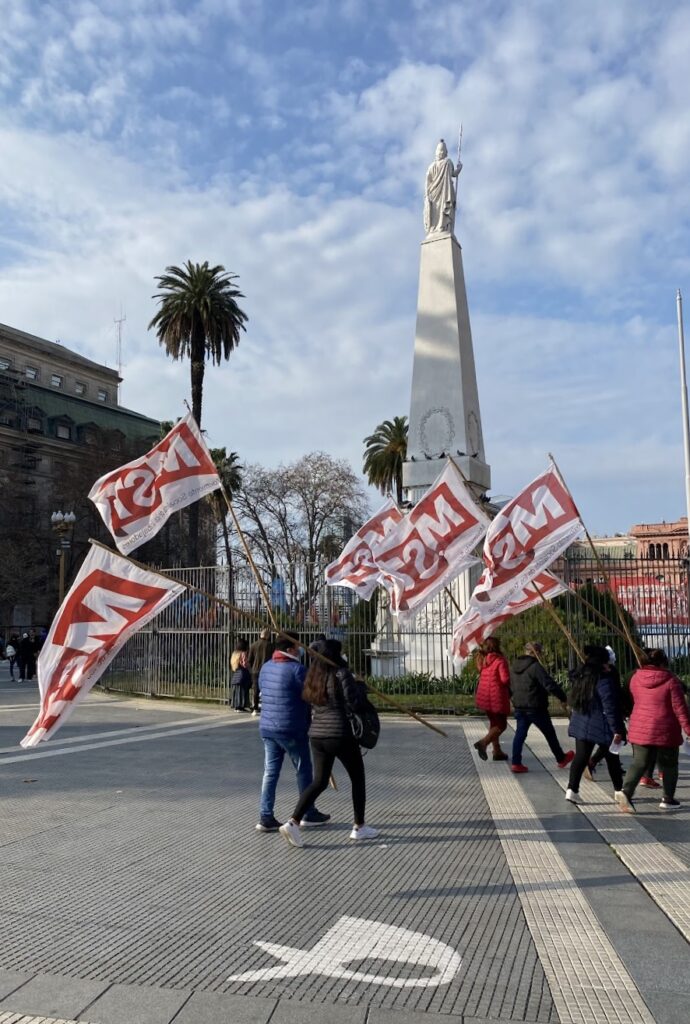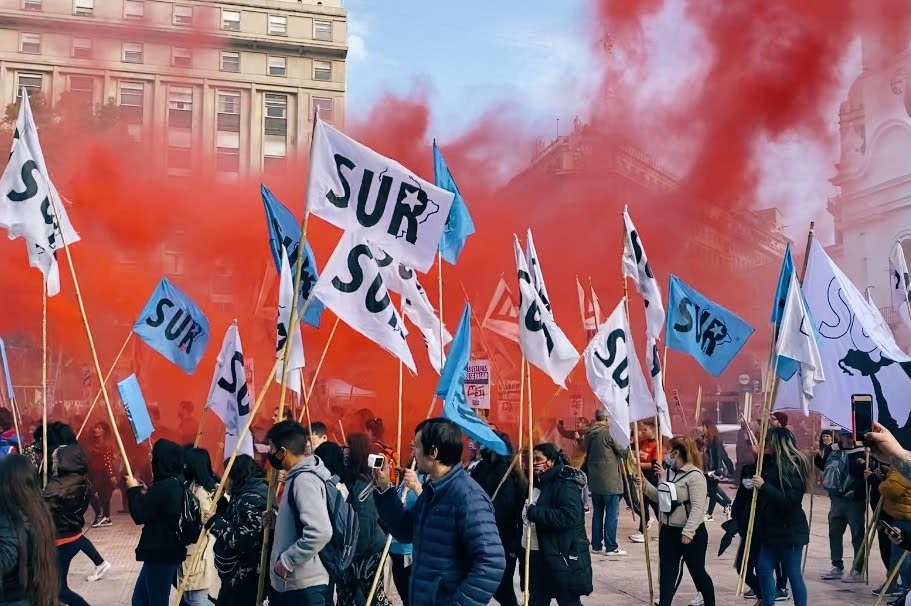
One of the most impactful moments I have experienced in Argentina so far was on our fourth day in La Plata. After returning from lunch, we had the incredible opportunity to hear from two women who work as activists with the Abuelas and Madres de Plaza de Mayo. One of the women, Silvia Fontana, talked to us about the biography she wrote about her sister who was pregnant when she was disappeared in 1977. Silvia’s mother dedicated the rest of her life to finding her missing daughter and grandchild. In 2006, with the help of the Abuelas de Plaza de Mayo, Silvia’s family recovered the identity of her nephew. He became the 84th lost grandchild to be restored by the Abuelas. After her mother passed away a few years ago, Silvia explained how she now works to honor and preserve the memory of both her sister and her mother. It was so inspiring to hear from the women behind such powerful human rights organizations. Silvia came into the Commission again last week to speak with us a bit more in depth about the process of writing a biography. As she was leaving, she asked how old we were. When I told her that I am 20 years old, she teared up and said her sister was 20 when she was kidnapped and murdered.
Within our internship with the CPM, we are each working on different teams that have different areas of focus. My team is writing short biographies about people who were disappeared from Pergamino using sources we find on the internet as well as the DIPPBA archives. DIPPBA, the Dirección de Inteligencia de la Policía de la Provincia de Buenos Aires (the intelligence unit of the Buenos Aires province Police Force), operated in La Plata between 1956 and 1998. In 2001, the Comision Provincial por la Memoria (CPM) was created to preserve the DIPPBA archives, which contain hundreds of intelligence documents tracking “subversive” activity. It has been so unique to have such hands-on experience with the documents and their history. Constructing these biographies is a reminder that 30,000 is not just a number. Each number represents a person with a life, family, interests, hopes, and plans. I always think about Silvia and her family while I am working. Jorge Rafael Videla, one of the most brutal orchestrators of the “War Against Subversion,” famously said that the “disappeared” do not exist. Writing these biographies, which memorialize the lives of people whose identities were stolen, feels like a small way of helping the fight against the state terrorism which occurred in Argentina.
When we visited Buenos Aires for the first time we went to see the Plaza de Mayo, where the Madres and Abuelas have famously held protests every Thursday at 3:30 since 1977. They were not allowed to congregate in large groups when they first began protesting, so they would walk in pairs around the Plaza wearing white handkerchiefs, or “pañuelos,” embroidered with the name of their missing child. The bricks in the Plaza are painted with large white pañuelos, forever marking the Madres’ place in Argentine history. As we were leaving the Plaza, we heard loud noises coming from the streets around the Plaza. When we walked to see what was going on, we saw a mass of people carrying flags and banners. We learned that different leftist groups coordinated a protest together. A large banner in front of the Casa Rosada, the office of the president, read “No al Pago de la Deuda Externa – Fuera el FMI” (No to foreign debt payment – IMF Get out).
The idea that multiple political groups, all with different views, could organize, coordinate, and mobilize that many people was mind blowing. We saw banners for socialist groups, anarchists, Trotskyists, center-leftists, and Marxists. As the economic situation in Argentina continues to worsen, it has been incredible to see people come together. That Saturday reminded me of the power of protest and the energy of mass mobilization. It also reminded me about the importance of place and legacy. I am so excited for the rest of our time in Argentina, and I know I will be taking many powerful lessons back to the United States with me.




